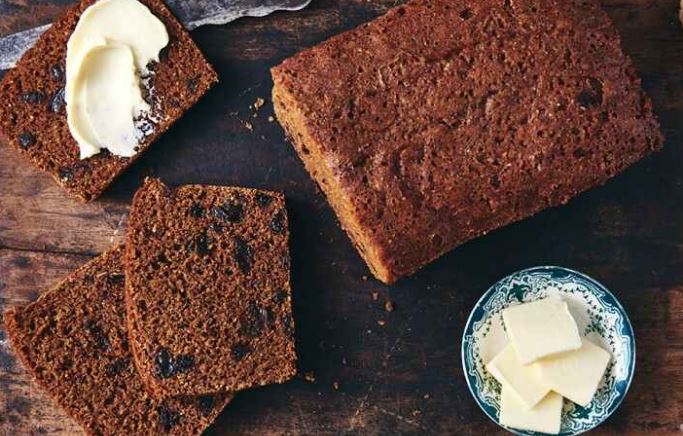Boston Brown Bread, a culinary emblem of New England tradition, transports us to a time when resourcefulness and simplicity gave birth to remarkable flavor. This rich and wholesome bread, characterized by its rustic appearance and deep, earthy tones, embodies the essence of heritage baking. The story of Boston Brown Bread invites us to explore the historical roots of this nourishing loaf and the art of steaming that brings it to life.
The origins of Boston Brown Bread harken back to the colonial era, when early American settlers faced the challenge of creating sustenance from limited resources. Necessity sparked culinary innovation, and brown bread emerged as a hearty staple made from readily available ingredients.
This humble bread became particularly popular in New England, where frugality and a connection to the land were deeply ingrained. The combination of rye, cornmeal, graham flour, and molasses offered a balanced mix of flavors and nutrition. The use of molasses, a byproduct of sugar refining, provided a touch of sweetness and acted as a natural preservative.
Boston Brown Bread’s distinct dark hue can be attributed to the combination of molasses and cornmeal, which imparted a rich color to the loaf. The bread’s preparation method, involving steaming rather than baking, reflected both practicality and ingenuity. This technique made it possible to create a moist, dense texture that was less reliant on ovens.
The process of making Boston Brown Bread involved a careful mixing of dry ingredients, followed by the dissolution of baking soda in molasses and sweet milk. This wet mixture was then combined with the dry ingredients to form a batter. The batter was poured into a greased mold, often using creative vessels like a 6-pound Crisco pail, showcasing the resourceful spirit of the bakers.
Steaming the bread was a patient endeavor that required three and a half hours of steady heat. The steam’s gentle embrace transformed the batter into a firm and substantial loaf. As the aroma of molasses and grains filled the kitchen, Boston Brown Bread took on a comforting presence that resonated with the values of nourishment and togetherness.
INGREDIENTS
- 1 cupful ryemeal
- 1 cupful sugar
- 1 cupful cornmeal
- 1 cupful graham flour
- 3/4 tablespoonful baking soda
- 1/3 teaspoonful salt
- 2 tablespoonfuls Crisco
- 3/4 cupful molasses
- 1-3/4 cupfuls sweet milk
INSTRUCTIONS
- Begin by mixing and sifting the dry ingredients (ryemeal, sugar, cornmeal, graham flour, baking soda, and salt) in a bowl.
- Dissolve baking soda in one tablespoonful of hot water, and then add it to the molasses. Mix this molasses mixture with sweet milk.
- Combine the wet mixture with the dry ingredients, stirring until well incorporated.
- Grease a mold (such as a 6-pound Crisco pail) and fill it two-thirds full with the batter.
- Grease the cover of the mold and secure it in place.
- Steam the Boston Brown Bread steadily for three and a half hours, allowing the flavors to meld and the bread to firm up.
- Once steamed, remove the bread from the mold and allow it to cool before slicing and serving.
In summary, Boston Brown Bread stands as a testament to the ingenuity of early American bakers and their ability to create nourishing and flavorful sustenance from humble ingredients. Its history and preparation method reflect a reverence for tradition and resourcefulness, resulting in a loaf that encapsulates the essence of New England’s culinary heritage. With its deep tones and hearty texture, Boston Brown Bread continues to be a cherished symbol of comfort and sustenance, embodying the spirit of a time-honored tradition.





